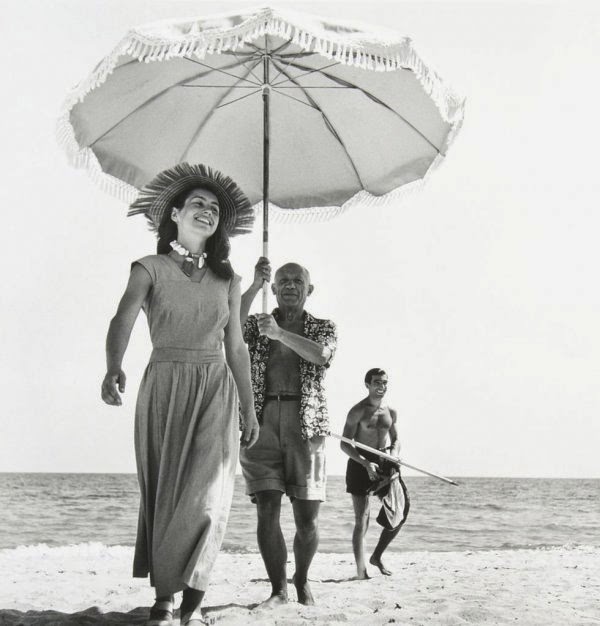Back in the day, I wrote a novel titled Bleeding London. Among many
other things it contains a character called Stuart London who sets out to walk
down every street in London. He carries
an A to Z with him, blacking out the streets once he’s walked them, so he ends
up with a completely obliterated (and useless) map. Go pick the symbolism out of that one, kids.
The book was considered a
success (these things are always comparative). Time Out ran a piece titled
“London’s Most Erotic Writers” and I came in 19th on the basis of Bleeding London, which I thought wasn’t
bad, considering that Walter, author of My
Secret Life came in number one, and Shakespeare came in number seven. And I was thrilled to find that I was ten
places ahead of JG Ballard.
Over the years various people have wanted to “do
something” with my novel, turn it into a movie, or TV series, or comic book. I’ve always said, “Great, go ahead,” but ultimately
nothing has ever come of it; it has steadfastly remained a book. So when I got an email from Del Barrett of
the Royal Photographic Society saying she wanted to curate a photographic
exhibition based on Bleeding London,
I again said sure, go for it, but never really expected to hear from her again.
Oh me of little faith. On the 15th of May I was in London
for the official launch of Bleeding London: the exhibition, which according to
the press release is “the most ambitious photo project
that the capital has ever seen – to photograph every street in London.
Based on the Whitbread short-listed novel, Bleeding London by Geoff
Nicholson, we are challenging Londoners and visitors to follow in the footsteps
of Stuart London and cover the entire A to Z.”
If
the standard A to Z is to be believed, that will involve covering 73,000
streets, an enterprise that sometimes strikes me as utterly insane. At other times however, I think well, let’s
imagine the RPS can round up 1000 committed photographers, that’s only 73
streets each, and these guys can take a couple of hundred pictures in a day, so
that seems perfectly doable. Here’s a
picture (by Roger Kelly) of me and the infinitely generous, infinitely tireless (and infinitely able to marshal the troops) Del Barrett, at the launch party. We're about to start obliterating London.

Wanting
to be involved, and determined to show willing, while I was in London I walked
all the streets in a single square of the A to Z as determined by Del, covering
part of Lewisham. The annotations and
the wear are all mine. And frankly it
was absolutely knackering, mentally as much as physically (although the expedition
only took a little more than three hours), as I walked up Algernon Street and
tramped along Marsala Street and flogged along Shell Street and meandered the
length of Vicar’s Hill (among many others) and finally ended up in Loampit
Vale, snapping as I went.

In fact I often carry a camera with me when I go
walking, but if I take half a dozen photographs in the course of an afternoon I
think that’s plenty. Here there was the
impetus, the necessity, of finding something to photograph in every single
street. You could argue that there’s
something very democratic about this, maybe something very Zen. Every street becomes equal, you have to find
something of interest, something “worth” observing and photographing regardless
of where you are.

It wasn’t always easy. Certain streets seemed to offer multiple
attractions, some seemed a bit dull, and offered nothing whatsoever at first
glance. The job therefore was to look
harder, to see through the perceived dullness and find the things that are
worthy of attention. And although the
majority of the streets were suburban and very quiet (I like suburban streets
very much), there were some oddities, this thing, and I can’t decide if it’s a
sidecar from a motorbike or a rocket ship from an old fairground ride (I suppose it's the former, but I hope it's the latter),
and a Zombie Outbreak Response Vehicle, among
them.
Inevitably not every picture I took was massively
interesting, and there was a certain reliance on my own set of clichés: show me
a corrugated metal fence or and I’ll snap away with the best.
And sometimes – and this was a curious and
unexpected thing - the street signs themselves were as fascinating and picturesque
as anything in the street.
All in all it was a strange mission, involving a
curious sort of discipline. It was
definitely a walk with a purpose, but by no means a walk from A to B (let alone
from A to Z). It represented a way of
exploring the territory, making it your own, exhausting it even as you exhaust
yourself. I write about this a lot in
the novel.
And I kept thinking it was like a sort of minimalist
or conceptualist art project, something Sol LeWitt would have approved of. I
don’t claim that Sol LeWitt is a completely open book to me, but I do know that
he said, "When an artist uses a
conceptual form of art, it means that all of the planning and decisions are
made beforehand and the execution is a perfunctory affair. The idea becomes a
machine that makes the art." Who
wouldn’t want that?
I also discover that in his early work,
LeWitt was influenced by Eadweard Muybridge’s serial photographs, not least of
walkers. Well yes.
You can find out a whole lot more about the Bleeding London, RPS project right here:

























